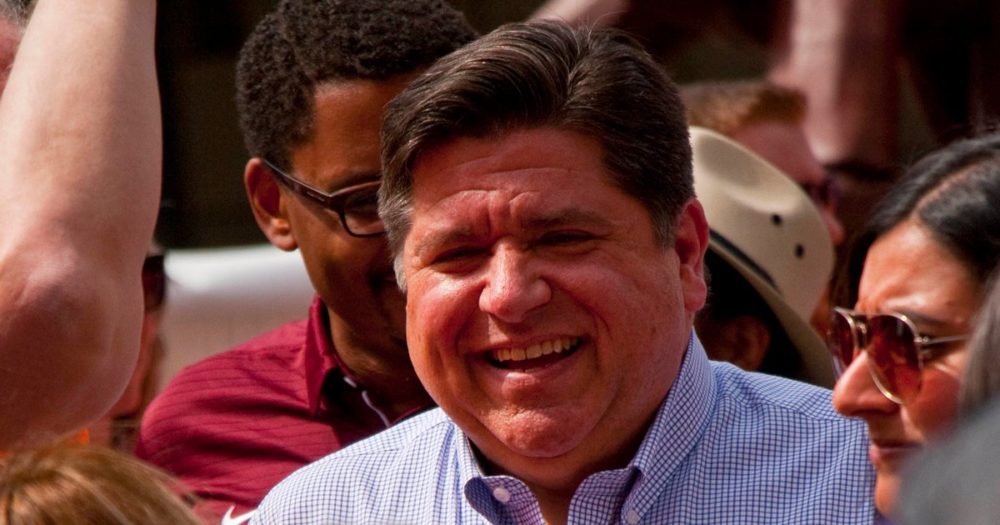On Wednesday Governor J.B. Pritzker will give his first budget address as Illinois’s 43rd Governor. This is a key opportunity for him to address the financial benefits of renewable energy and a pathway for Illinois to achieve 100% carbon-free electricity.
Last month Pritzker joined the U.S. Climate Alliance, a bipartisan coalition of governors committed to reducing greenhouse gas emissions consistent with the goals of the Paris Agreement.
In his Budget Address Governor Pritzker should take the next step by laying out a plan to achieve his climate commitments. The governor would do well by referencing recent findings and recommendations from the Powering Illinois’ Future Committee and the Illinois Commerce Commission’s NextGrid study. It’s vital that his energy platform be an equitable path forward for the state. Here’s what we hope to see included.
Reference to powering Illinois’ future
Earlier this month Governor Pritzker released a report from the Powering Illinois’ Future Committee, a committee co-chaired by Jen Walling, Executive Director of the Illinois Environmental Council.
The report outlines an equity focused framework that will build upon the Future Energy Jobs Act (FEJA). The report recommends that the state commit to 100 percent renewable energy while ensuring a just transition for all communities. Illinois can utilize renewable energy and energy efficiency to advance economic development, improve public health, and create good-paying jobs. The Committee recommended improving the health and safety of the state through equitable and responsible capital investments as well as catalyzing carbon-free energy expansion. Some key recommendations from the Committee include:
- Ensure housing stock in Illinois is ready for energy efficiency upgrades and to prioritize older housing stock in low-income communities.
- Create clean energy empowerment zones in rural, transitioning, and communities of color to share in the economic and environmental benefits of Illinois’ shift to a clean energy economy. Through these zones, provide grants to facilitate locally-designed, community-directed clean energy initiatives.
- Expand electric vehicle charging infrastructure, by providing incentives for conversion of public transit and school buses and offer special rates to school districts that adopt EV buses.
- Integrate R&D efforts with business creation and compete for federal and private sector energy storage investments in Illinois. Incentivize projects at retired or soon-to-be retired coal plants to spur economic development in those transitioning communities.
- Support shovel ready solar projects for schools and state-owned properties. Implement the Solar for All program by initiating an additional 100 projects at publicly-owned properties in low-income communities.
These recommendations should be the cornerstone of the Pritzker Administration’s policy platform and they should be included in his capital plan.
Findings from the NextGrid study
Last year the Illinois Commerce Commission (ICC) launched NextGrid, the Illinois Utility of the Future Study. The study was a collaboration between key stakeholders to create a shared base of information on electric utility industry issues and opportunities around grid modernization. It was managed by the University of Illinois and consisted of seven working groups. UCS participated in two of the working groups, Regulatory and Environmental Policy Issues and Ratemaking.
While still in draft form, the report does include three specific recommendations that the Pritzker Administration should use in the areas of electric vehicle charging infrastructure, deployment of energy storage resources to enable further integration of renewable energy, and proactiveness on protecting consumer data privacy. It is a missed opportunity that the NextGrid process did not result in a roadmap or larger set of policy recommendations for Illinois, but the report does identify areas where Illinois can move forward on policy changes to further the goals of a reliable, affordable, and carbon-free energy grid.
The Draft Final Report does recognize that there is “very broad interest in active participation to mitigate climate change impacts in every possible way”. Participants shared the goal to make the grid greener through the continued integration of renewable energy resources to reduce emissions, and the desire to pursue sustainable ways to meet the state’s energy needs.
There is an urgent need to respond to climate change by decarbonizing the electric grid and the many environmental and economic opportunities offered by advancing clean energy. The consensus points discussed throughout the process and laid out in the final draft report should be utilized by the Pritzker Administration.
A bold agenda for Illinois is needed now
There is no time to waste. According to the Fourth National Climate Assessment projected changes in precipitation, coupled with rising extreme temperatures before mid-century will reduce Midwest agricultural productivity to 1980s levels without major technological advances. At the same time, we must swiftly and sharply reduce our global warming emissions, so we can avoid even worse impacts. Illinois deserves a healthy economy and environment where all communities can thrive.
The Pritzker Administration has the capacity to innovate around carbon-free energy sources, while creating jobs and protecting the health of all Illinoisans. Governor Pritzker’s leadership on renewable energy and energy efficiency is crucial. During his campaign he stated that Illinois deserves clean air, clean water, and a safe environment where all communities can thrive. He said he stands on the side of science and believes climate change is real. Now is the time to put these campaign promises into action.

